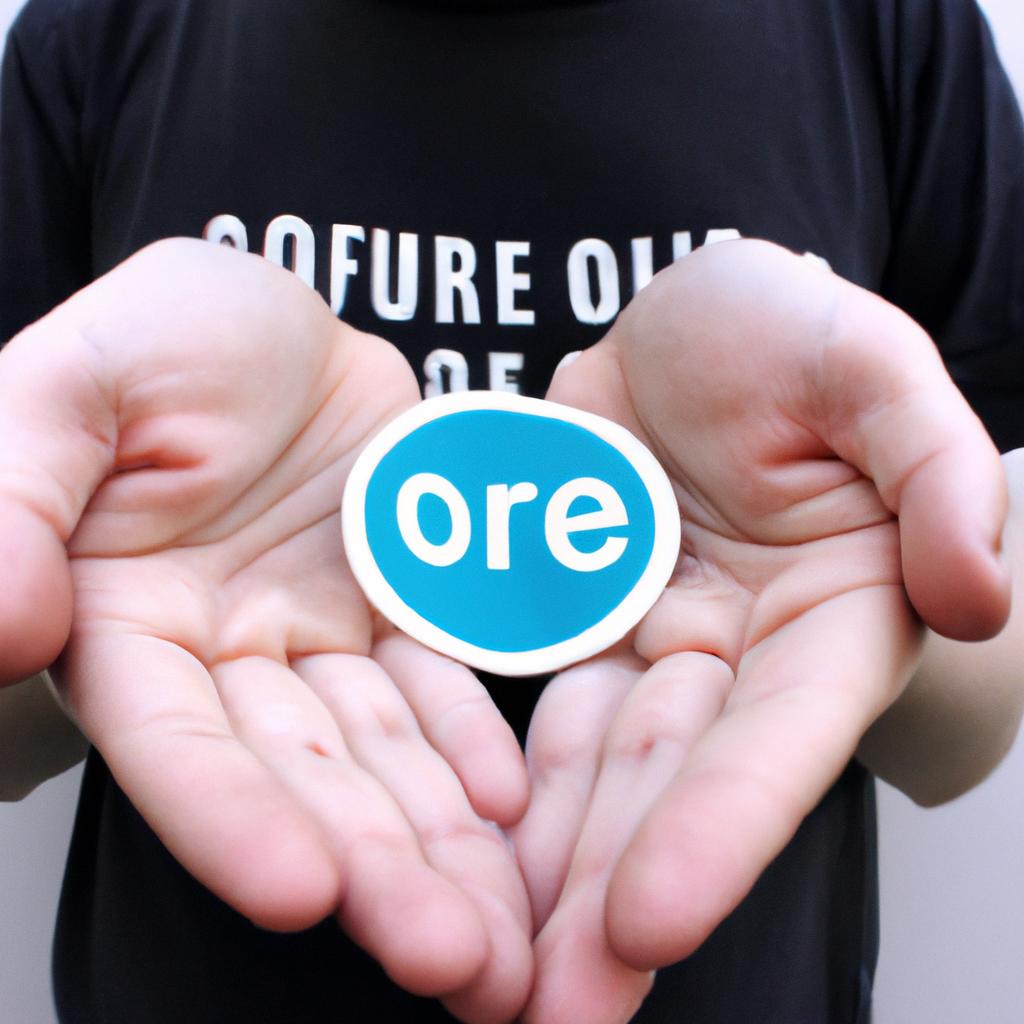Open Source Software (OSS) has become an integral part of the modern technological era, revolutionizing the way software is developed and distributed. One prominent example of OSS licensing is the GNU General Public License (GPL), which allows users to freely use, modify, and distribute software while ensuring that any derivative works also remain open source. The English Premier League (EPL), a highly popular professional football league in England, recently embraced OSS by adopting GPL for its internal software development projects. This move not only highlights the growing importance of OSS in various industries but also raises questions about how different licensing models can impact software development and distribution.
Understanding the intricacies of EPL’s adoption of GPL requires a comprehensive overview of open source licensing in general. Open source licenses grant users certain freedoms that are absent in proprietary software licenses. These include the freedom to study, modify, and distribute the source code without restrictions. However, these freedoms come with specific obligations to ensure that subsequent versions or modifications of the software continue to be released under similar terms. By examining various open source licenses such as GPL, BSD, MIT, and Apache License 2.0, this article aims to provide a holistic understanding of how different licensing models influence the availability, accessibility, and sustainability of open source software.
Open source licenses play a crucial role in determining the availability, accessibility, and sustainability of open source software. The adoption of a specific license, such as GPL, BSD, MIT, or Apache License 2.0, can have varying implications for software development and distribution.
The GNU General Public License (GPL) is one of the most widely used open source licenses. It places strong copyleft obligations on derivative works, meaning that any modifications or enhancements made to the original software must also be released under the same GPL terms. This ensures that subsequent versions or modifications remain open source and freely accessible to users. The adoption of GPL by the English Premier League (EPL) indicates its commitment to maintaining openness and allowing others to build upon their software contributions while also benefiting from community collaboration and feedback.
On the other hand, licenses like BSD, MIT, and Apache License 2.0 offer more permissive terms compared to GPL. These licenses allow greater flexibility in how the software can be used and integrated into proprietary projects without imposing strict copyleft requirements. While this allows for wider adoption and integration with proprietary systems, it may also result in less contribution back to the open source community since derived works are not obligated to be released under similar terms.
The choice of an open source license depends on various factors such as project goals, desired level of openness, collaboration preferences, and business strategies. Some organizations prefer strong copyleft licenses like GPL to ensure that their contributions remain free and open over time. Others may opt for more permissive licenses like BSD or MIT to encourage broader adoption and compatibility with proprietary systems.
In summary, different licensing models impact software development and distribution in different ways. Strong copyleft licenses like GPL prioritize openness by ensuring that derivative works are also released under similar terms. Permissive licenses like BSD or MIT provide greater flexibility but may lead to less contribution back to the open source community. Ultimately, understanding these licensing models is crucial for organizations and developers to make informed decisions about the openness, availability, and sustainability of their software projects.
Understanding EPL
The Eclipse Public License (EPL) is a widely used open source software license that governs the distribution and modification of software. It provides developers with certain rights, while also imposing obligations to ensure compliance with its terms. To better grasp the implications of this license, let us consider an example: Imagine a developer named Alice who has created a web-based application using an open-source framework licensed under EPL. She wishes to distribute her application to other users.
Firstly, it is important to note that EPL allows Alice to freely distribute her software without charging any fees. This not only promotes collaboration but also encourages innovation by enabling others to build upon her work. However, if Alice modifies the original codebase or incorporates additional components into her application, she must be aware of the licensing requirements associated with those changes. For instance, if she integrates another open-source library that is licensed under GPL (General Public License), which may have different redistribution restrictions than EPL, it could affect how she can distribute her modified version.
To further explore the intricacies of EPL, let us delve into some key points about this license:
- Copyleft: The EPL follows a copyleft approach similar to the GPL, meaning that modifications made to EPL-licensed code must be released under the same license terms as the original work. This ensures that derivative works remain open source and fosters a collaborative ecosystem.
- Notice Requirements: When distributing software governed by EPL, it is essential for developers to include appropriate notices in their products and documentation. These notices typically inform users about their rights and provide attribution to the original authors.
- Compatibility: While being compatible with other licenses is generally desirable for increased flexibility, it’s crucial for developers working with EPL-licensed software to understand which licenses are compatible and which may impose limitations on distribution.
- Patent Protection: One notable aspect of EPL is its built-in patent protection clause. This provision ensures that users of the software are granted certain rights related to any patents held by the contributors, providing a level of assurance against potential intellectual property disputes.
In summary, understanding EPL is vital for developers who wish to distribute or modify open-source software licensed under it. By comprehending its copyleft nature, notice requirements, compatibility with other licenses, and provisions for patent protection, developers can navigate the licensing landscape more effectively.
Moving forward, let’s explore some advantages of working with EPL-licensed software and how it can benefit both individual developers and larger collaborative projects.
Advantages of EPL
To understand the implications of using the Eclipse Public License (EPL) for open source software development, it is crucial to delve deeper into its key features. This section will provide an overview of EPL licensing considerations and highlight some advantages that make it a popular choice among developers.
Licensing Considerations:
One example that illustrates how EPL can affect open source software projects involves a hypothetical scenario where a developer wants to utilize code from an existing project released under the GNU General Public License (GPL). The GPL requires any derivative work to be distributed under the same license, which may limit commercial opportunities. In contrast, by incorporating EPL-licensed components, developers have more flexibility in terms of licensing their own modifications or additions.
When considering adopting the EPL for an open source project, several factors should be taken into account:
- Compatibility with other licenses: EPL is compatible with many well-known licenses such as Apache License 2.0 and MIT License.
- Copyleft provisions: While not as strict as the GPL’s copyleft requirement, EPL still imposes certain obligations on users when distributing modified versions of licensed software.
- Patent rights: The EPL includes specific language related to patent grants, providing additional protection against potential intellectual property disputes.
- Community support: Being one of the most widely used open source licenses within the Eclipse Foundation community ensures access to a vibrant ecosystem and valuable resources.
Advantages of EPL:
The use of EPL offers several benefits for both individual developers and organizations:
- Commercial-friendly: Unlike restrictive licenses like GPL, EPL allows combining proprietary code with open source software without forcing all derived works to adopt the same license. This aspect makes it easier for companies to develop commercial products while leveraging open source components.
- Permissive modification policies: Developers working with EPL-licensed code enjoy greater freedom in modifying and extending existing projects, allowing for more innovation and collaboration within the open source community.
- Patent protection: EPL explicitly includes patent grants that provide users with legal safeguards against potential intellectual property disputes related to the licensed software or technology.
- Community engagement: The widespread adoption of EPL fosters a strong developer community, encouraging knowledge sharing, code contributions, and peer support.
Key features of EPL
In the previous section, we explored the advantages of using the Eclipse Public License (EPL) for open source software development. Now, let’s delve deeper into some key features that make EPL an appealing choice for developers and organizations.
One example where EPL has been successfully utilized is in the development of the Eclipse IDE. This integrated development environment has gained popularity due to its extensive plugin ecosystem, which allows users to customize their coding experience. The use of EPL ensures that these plugins can be freely distributed and modified by anyone interested in extending or improving the functionality of Eclipse.
When considering licensing options for your open source project, it is important to understand the benefits that come with choosing EPL:
- Flexibility: The license provides flexibility in terms of incorporating third-party code. Developers can combine EPL-licensed software with other licenses without fear of conflicting requirements.
- Compatibility: EPL is compatible with other widely-used licenses such as Apache License 2.0 and GNU General Public License (GPL). This compatibility fosters collaboration between different projects and communities.
- Community-driven governance: EPL promotes collaborative decision-making within its community by requiring contributors to sign a Contributor License Agreement (CLA). This helps ensure that developments are driven by consensus rather than individual interests.
- Strong patent protection: The license includes provisions related to patents, providing additional protection against potential legal disputes surrounding intellectual property rights.
To further illustrate these advantages, consider the following table comparing key features of popular open source licenses:
| GPL | MIT | Apache License 2.0 | |
|---|---|---|---|
| Copyleft | Strong | Permissive | Weak |
| Patent Grant | Yes | No | Yes |
| Commercial Use | Yes | Yes | Yes |
As we can see, EPL strikes a balance between the strong copyleft nature of GPL and the permissive approach of MIT. It offers patent protection while allowing for commercial use. This makes it an attractive option for developers looking to ensure both freedom and compatibility in their projects.
Comparison with other licenses
Key Features of EPL
After examining the key features of the Eclipse Public License (EPL) in the previous section, it is important to understand how this license compares to others commonly used in open source software development. To illustrate this comparison, let us consider a hypothetical scenario involving two popular open source licenses, namely the GNU General Public License (GPL) and the Apache License 2.0.
Imagine that a developer has created a new web application using an open source framework released under the GPL. The developer wants to distribute their application as closed-source proprietary software while still incorporating code from other open source projects. In such a case, they would face challenges due to the viral nature of the GPL, which requires derivative works to be licensed under its terms. This restriction could limit their ability to keep certain parts of their application private or require them to release all modifications made to upstream projects.
In contrast, if the same developer had chosen to use EPL-licensed components instead, they would have more flexibility in distributing their application without triggering copyleft requirements. While EPL does impose some obligations on downstream users—such as providing access to modified code—it allows for combining with non-EPL code without imposing reciprocal licensing conditions on that code.
To summarize, comparing licenses like EPL with others such as GPL or Apache License 2.0 reveals noteworthy distinctions that can significantly impact software development and distribution:
- License Virality: Unlike licenses such as GPL that enforce copyleft provisions on derivative works, EPL offers greater freedom by allowing combination with non-EPL code without imposing reciprocal licensing.
- Modification Requirements: While both GPL and EPL require sharing modifications made to licensed code, there are differences in how these requirements apply.
- Commercial Use: Some licenses may place restrictions on commercial use of licensed software or impose additional obligations on businesses utilizing open source components.
- Compatibility: Certain licenses may have compatibility issues with one another, making it important to consider the licensing terms of all components when integrating open source software.
By understanding these key distinctions and their implications, developers can make informed decisions when selecting a license for their projects.
EPL compatibility with open source software
Having discussed the comparison of EPL with other licenses, it is now imperative to explore its compatibility with open source software. To provide a comprehensive understanding of this topic, let us consider an example that illustrates how the Eclipse Public License (EPL) interacts with various open source projects.
Example: Imagine a scenario where a developer wants to integrate an open source library into their project licensed under the GNU General Public License (GPL). The question arises: can they combine GPL-licensed code and EPL-licensed code? This situation highlights the need for understanding the compatibility between different open source licenses.
To shed light on these compatibility concerns, here are some key points:
-
Dual Licensing Possibilities:
- Some developers choose to dual license their projects under both the EPL and another open source license.
- This allows users to select which license terms they wish to abide by when using or modifying the software.
-
Interoperability Challenges:
- While the EPL has been designed as a copyleft license similar to GPL, there may be interoperability challenges due to differing requirements and restrictions.
- It becomes crucial for developers to carefully analyze if combining EPL-licensed software with other open-source components adheres to all relevant licensing obligations.
-
Dependencies and Incorporation Considerations:
- When incorporating EPL-licensed code into a larger project, it is essential to ensure compliance not only within one’s own codebase but also any external dependencies.
- Understanding whether these dependencies have compatible licenses is vital in maintaining legal compliance across all levels of software integration.
-
Community Support and Collaboration Opportunities:
- Despite potential complexities surrounding compatibility issues, many communities actively work together towards developing solutions that allow interoperability among diverse open-source licenses.
| GPLv3 | Apache 2.0 | EPL | |
|---|---|---|---|
| Copyleft License | Yes | No | Yes |
| Compatibility with GPL | Yes | Yes | No |
| Commercial Use | Yes | Yes | Yes |
In summary, understanding the compatibility of EPL with other open source licenses is crucial for developers seeking to combine different software components. While dual licensing provides flexibility, challenges may arise due to differing requirements and restrictions. Careful consideration must be given to dependencies and incorporation processes. Despite these complexities, communities actively collaborate towards finding solutions that promote interoperability among diverse open-source licenses.
Transition into Subsequent Section – Common Misconceptions about EPL:
It is important to address common misconceptions surrounding the Eclipse Public License (EPL) in order to further explore its implications in the realm of open source software development.
Common misconceptions about EPL
Having discussed the various aspects of EPL and its compatibility with open source software, it is important to delve deeper into some common misconceptions surrounding this topic. By analyzing these misconceptions, we can gain a clearer understanding of how EPL operates within the realm of open source software.
Misconception 1: Limited Usage
Contrary to popular belief, the Eclipse Public License does not restrict or limit the usage of open source software released under its terms. While some may assume that EPL places restrictions on commercial use or limits distribution options, this is not accurate. The license allows for both commercial and non-commercial use, as well as modification and redistribution under certain conditions.
Misconception 2: Incompatibility with Other Licenses
Another prevalent misconception is that EPL is incompatible with other open source licenses. However, in reality, EPL’s copyleft provisions are designed to be compatible with most major open source licenses such as GNU General Public License (GPL) and Apache License. This compatibility fosters collaboration among different projects and promotes interoperability between software components.
Misconception 3: Excessive Legal Complexity
Some individuals perceive licensing agreements as overly complex legal documents filled with jargon. Although it is true that licenses contain legal language to ensure clarity and enforceability, navigating through them does not have to be an arduous task. Many organizations provide resources and guidance on interpreting licensing agreements like EPL so developers can easily understand their rights and obligations when using open source software.
To further illustrate the above points, let’s consider a hypothetical scenario involving an organization developing a web application utilizing various open-source libraries governed by different licenses:
| Library Name | License | Restrictions |
|---|---|---|
| Library A | MIT | None |
| Library B | GPL | Requires derivative work |
| Library C | EPL | Requires source distribution |
In this scenario, the organization can utilize all three libraries in their web application without any issues. While Library B’s GPL license would require them to distribute their derivative work under the same terms, it does not impact the usage or integration of Library A (MIT) or Library C (EPL). This example highlights how different licenses can coexist and contribute to a cohesive software solution.
To conclude, understanding the compatibility between EPL and open source software is crucial for developers and organizations seeking to leverage these resources effectively. Dispelling misconceptions surrounding EPL helps foster collaboration, promotes innovation, and encourages responsible use of open-source software within legal frameworks.




